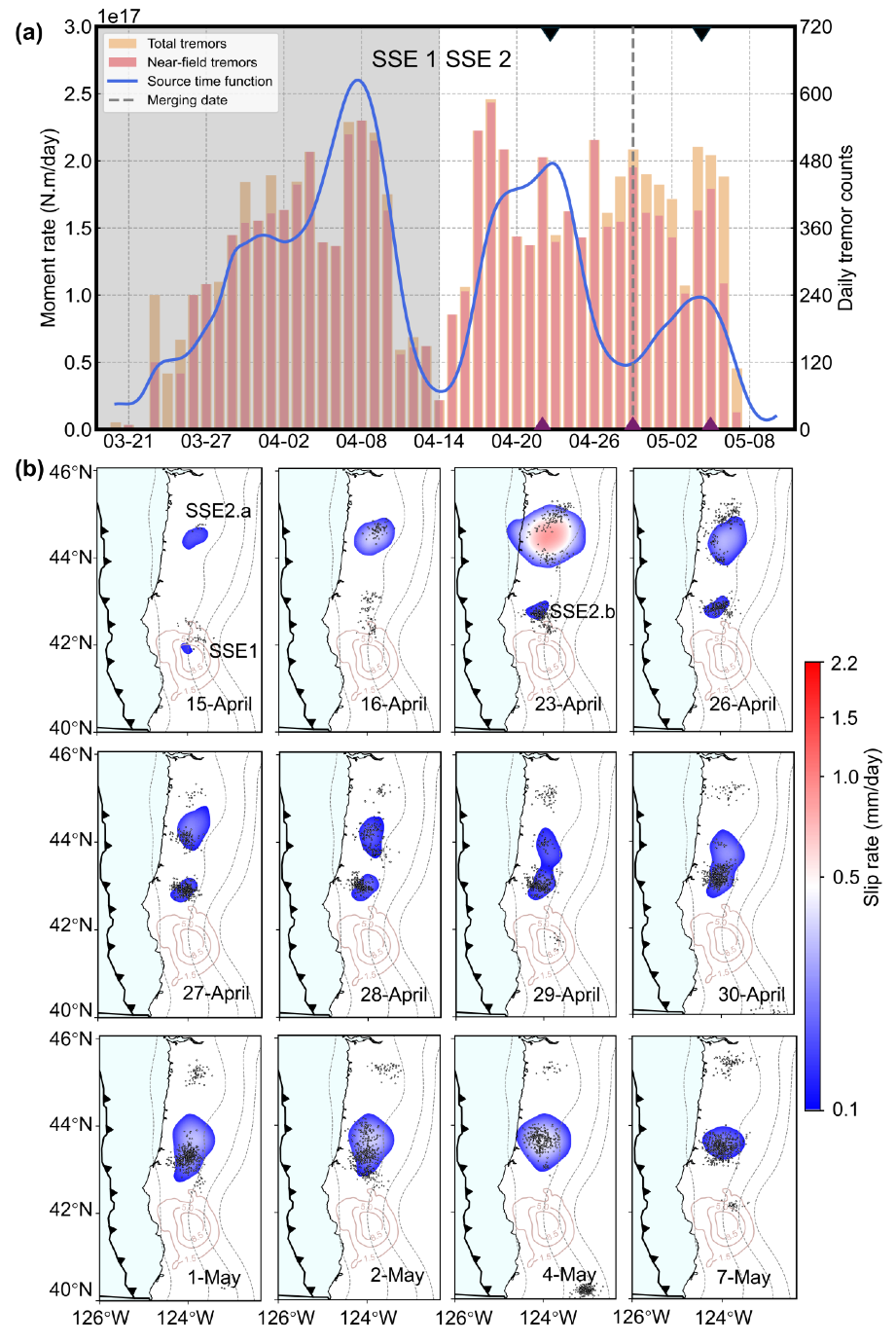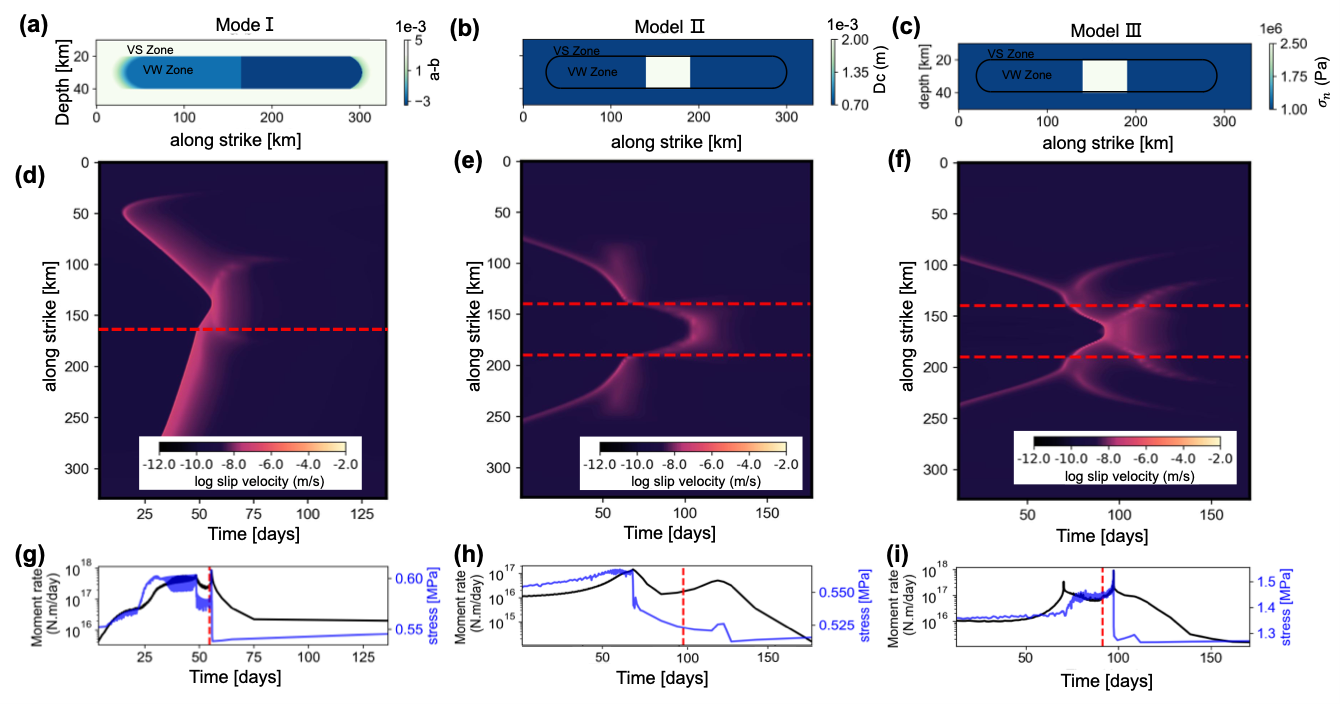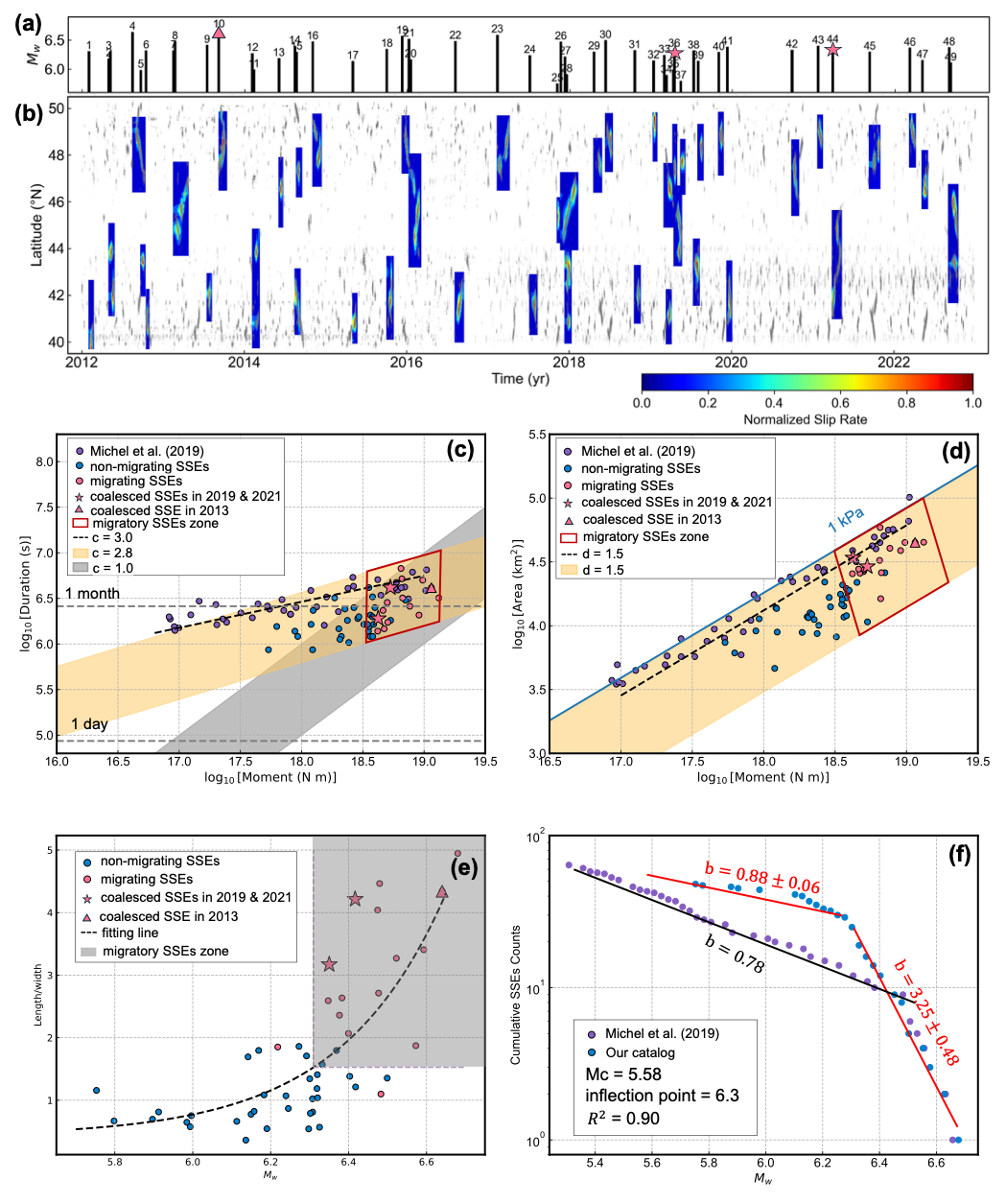Earthquake forecasting remains one of the most challenging problems in geoscience. Recent studies suggest that slow slip events (SSEs) in subduction zones may be related to the spatiotemporal evolution of future large earthquakes, making them potential precursor signals for earthquake prediction.
“Slow slip” refers to a process in which faults slip at a very slow rate deep within the Earth. Although it shares the same fundamental nature as ordinary earthquakes—both involve the release of accumulated stress on the fault after reaching a critical threshold—their modes and timescales of energy release are completely different. While ordinary earthquakes release energy within seconds or minutes and generate strong seismic waves, SSEs can last for days, weeks, or even months, with a sliding velocity millions of times slower than that of ordinary earthquakes. As a result, SSEs do not produce observable high-frequency seismic waves, making traditional seismometers largely ineffective for observing them.
Instead, Global Navigation Satellite System (GNSS) time series are used to study these events. However, the signals of SSEs are often masked by various tectonic and non-tectonic signals as well as noise, making their identification difficult.

A research team led by Professor Kejie Chen from the Department of Earth and Space Sciences at the Southern University of Science and Technology (SUSTech) recently addressed this problem. Using more than ten years of coordinate time series from 240 GNSS stations, they employed a machine learning-based signal detection approach and combined geophysical inversion with numerical simulations. Their findings systematically reveal the merging process of SSEs and their impact on fault stress in the Cascadia Subduction Zone, providing new insights into the role of slow slip in the seismic cycle.
Their paper, titled “Secondary acceleration of slip fronts driven by slow slip event coalescence in subduction zones,” has been published in Nature Communications.
To detect SSEs more accurately, the researchers developed a deep learning framework (Figure 1; Wang, Chen, et al., 2024, GPS Solutions) that combines Variational Bayesian Independent Component Analysis (vbICA) with a Bidirectional Long Short-Term Memory (BiLSTM) fusion model, further enhanced with a Convolutional Block Attention Module (CBAM) to accurately detect SSEs in GNSS time series.

Figure 1. Schematic of the deep learning network architecture; The model consists of three stacked bidirectional LSTM layers, along with channel attention and spatial attention modules, and outputs the discrimination probability of each data point through a Sigmoid layer
Based on this deep learning framework, 49 SSEs were detected in the Cascadia region between 2012 and 2022. Kinematic inversion revealed three slow slip event coalescence occurrences in 2013, 2019, and 2021. The 2013 event had already been confirmed in previous studies, occurring during two slow slip “acceleration surges” when two slip fronts collided, increasing the sliding velocity.
This event was considered a potential precursor to a major earthquake. However, it was not possible to quantitatively analyze whether this acceleration phase was a normal behavior of slow slip or caused by the coalescence of slip fronts. A more reasonable approach would be to explore the merging process during the deceleration phase of SSEs. This work further discovered that the coalescence events in 2019 and 2021 occurred during the deceleration phase.
Using the 2021 coalescence event as an example for detailed analysis (Figure 2), the study reveals that the slow slip occurred in two phases. The first phase was dominated by the southern region (SSE1), followed by the second phase, which involved two slip areas (a and b) (SSE2).
On April 29, 2021, the two slip fronts merged during the deceleration phase, triggering a secondary acceleration, reaching the peak sliding rate on May 4, and significantly increasing the rupture area. During this period, the number of seismic tremors also increased, showing a strong correlation with the sliding rate, indicating that a stress transient (approximately 25 kPa) triggered the tremor activity. Compared to the 2013 event, the team’s results show that even during the attenuation phase, coalescence can “reverse” the weakening trend of SSEs.

Figure 2. Seismic moment rate variation (a) and rupture evolution snapshots (b) of the 2021 coalescing SSEs
To further investigate the coalescence mechanism of SSEs, they constructed a dynamic numerical model on the QDYN platform using rate-and-state friction theory and introduced fault-interface heterogeneity (variations in friction parameters, characteristic slip distance Dc, and effective normal stress σₙ) (Figure 3). The simulations show that coalescence can occur even in a uniform model, but fault heterogeneity slows down the propagation speed, creating “barrier zones.” This leads to coalescence in the southern Cascadia region, primarily occurring during the deceleration phase.
Geological factors such as the Siletzia basalt body, Klamath Mountains sediments, and high-pressure fluid pathways could play key roles in shaping this behavior. The modeled lag time of 6-18 days for secondary acceleration aligns well with the observed data, validating the reasonableness of this mechanism.

Figure 3. Calculation results of slow slip deceleration coalescence phenomenon using different dynamic models
The study categorizes SSEs into two types: “migration-type” events, where the centroid location moves along the fault direction, and “non-migration-type” events, where the centroid location remains largely stationary (Figure 4). Coalescence during the deceleration phase can be considered a special manifestation of the migration-type behavior.
Statistical analysis of 49 SSEs reveals that migration-type SSEs have longer durations, greater energy release, and larger rupture areas, indicating they are more likely to interact spatially. Scaling law analysis shows that migration-type SSEs follow a power-law relationship between energy release and duration, distinct from non-migration events. This suggests that the rupture process behaves more like one-dimensional forward propagation rather than two-dimensional diffusion. As a result, when slip propagates along the fault and encounters structurally complex or stress-heterogeneous areas, the phenomenon of front-edge coalescence and secondary acceleration is more likely to occur.
At the same time, the magnitude-frequency distribution of SSEs displays a distinctive change around Mw ≈ 6.3. Below this threshold, event frequency decreases gradually with increasing magnitude; above it, the frequency drops sharply, and the b-value increases abruptly from 0.88 to 3.25. This change is related to the “morphology” of SSEs—when the rupture area becomes elongated (with an aspect ratio greater than 1.65), events tend to exhibit migration or coalescence characteristics.

Figure 4. (a-b) Spatiotemporal distribution of SSEs based on deep learning detection catalog; (c-f) Various dynamic behaviors of SSEs and their corresponding calibration rates
This work reveals and explains that slow slip can undergo coalescence and migration during the deceleration phase. This seemingly gentle deep slip can re-accelerate fault activity and expand the rupture area, challenging the traditional view that SSEs gradually decay until they cease. It suggests that the interactions between SSEs are not passive processes; rather, they may actively alter the stress state of the fault, influencing the triggering timing and rupture path of future large earthquakes.
Ph.D. student Ji Wang from the Department of Earth and Space Sciences is the first author of the paper, with Professor Kejie Chen serving as the corresponding author. Other collaborators include Ph.D. student Hai Zhu, postdoctoral researcher Shunqiang Hu (currently an assistant researcher at Jiangxi Normal University), and master’s student Lei Xia (currently a researcher at Huawei Cloud R&D), as well as Ph.D. student Jun Xie from the Department of Earth and Space Sciences. The study also involved collaboration with postdoctoral researcher Sylvain Michel from the Université Côte d’Azur and Assistant Professor Luca Dal Zilio from Nanyang Technological University.
Paper link:
https://www.nature.com/articles/s41467-025-64616-3
Related link (GPS Solutions,2024):
https://link.springer.com/article/10.1007/s10291-024-01701-y
To read all stories about SUSTech science, subscribe to the monthly SUSTech Newsletter.
Proofread ByAdrian Cremin, Yifei REN
Photo ByDepartment of Earth and Space Sciences